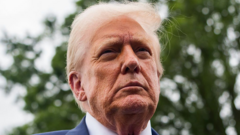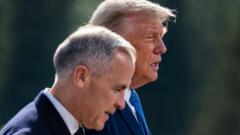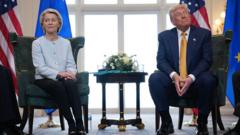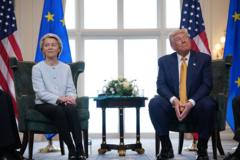Nike to Increase Prices Amid Uncertainty Over Tariffs

Nike to Increase Prices Amid Uncertainty Over Tariffs
Nike plans to raise prices for select footwear and apparel in the U.S. starting June 1, amidst ongoing concerns over tariffs.
The upcoming price adjustments, while not directly attributed to tariffs, coincide with a broader trend in the retail industry where companies assess pricing strategies in light of import duties and market conditions.
Nike, the renowned sportswear entrepreneur, is gearing up to implement a price hike on a range of trainers and apparel in the United States effective early June. This decision follows rival Adidas's warning regarding potential increases due to the ongoing tariff debate. While Nike refrained from explicitly linking the price adjustments to tariffs, it acknowledged the necessity of "regular price adjustments" as part of its operational strategy.
The backdrop of this price adjustment is the tariffs imposed under the Trump administration, particularly targeting imports from Asia, where most of Nike's production occurs. The current landscape involves a 10% base tariff, with certain higher reciprocal tariffs on imports from countries like Vietnam, China, and Indonesia on hold until July as negotiations linger.
Nike’s Chief Financial Officer, Matt Friend, outlined in March the complexities the company is facing, including tariffs and other macroeconomic factors influencing consumer confidence. Beginning June 1, the company will increase prices on most of its shoes priced above $100 by up to $10, while clothing and equipment will see hikes ranging from $2 to $10. Notably, certain popular models, including the Air Force 1, as well as children's products and Jordan brand items, will be exempt from these price rises.
Adidas recently echoed similar sentiments, suggesting that tariffs would elevate prices in the U.S. for their popular footwear lines. Concurrently, JD Sports indicated that tariff-induced price increases may lead to a decline in consumer demand within the U.S. market.
The uncertainty surrounding Trump’s trade policies continues to affect many businesses globally. The proposed steep reciprocal tariffs, announced earlier this year, aim to impose taxes of up to 54% on imports from specific countries known for producing footwear. Vietnam, where Nike sources over half of its footwear, currently faces a significant 46% reciprocal tariff slated under these measures.
In a somewhat surprising move, Nike has announced its return to selling directly on Amazon for the first time since 2019. This shift comes as the company contends with falling digital sales across multiple regions, which is sparking a strategic turnaround under the leadership of Elliott Hill, who has recently returned to oversee operations, focusing on key markets including the UK, the U.S., and China.
While navigating the challenges posed by international trade relations and fluctuating consumer preferences, Nike and other industry players continue to adapt their pricing structures to remain competitive amidst changing economic landscapes.
Nike, the renowned sportswear entrepreneur, is gearing up to implement a price hike on a range of trainers and apparel in the United States effective early June. This decision follows rival Adidas's warning regarding potential increases due to the ongoing tariff debate. While Nike refrained from explicitly linking the price adjustments to tariffs, it acknowledged the necessity of "regular price adjustments" as part of its operational strategy.
The backdrop of this price adjustment is the tariffs imposed under the Trump administration, particularly targeting imports from Asia, where most of Nike's production occurs. The current landscape involves a 10% base tariff, with certain higher reciprocal tariffs on imports from countries like Vietnam, China, and Indonesia on hold until July as negotiations linger.
Nike’s Chief Financial Officer, Matt Friend, outlined in March the complexities the company is facing, including tariffs and other macroeconomic factors influencing consumer confidence. Beginning June 1, the company will increase prices on most of its shoes priced above $100 by up to $10, while clothing and equipment will see hikes ranging from $2 to $10. Notably, certain popular models, including the Air Force 1, as well as children's products and Jordan brand items, will be exempt from these price rises.
Adidas recently echoed similar sentiments, suggesting that tariffs would elevate prices in the U.S. for their popular footwear lines. Concurrently, JD Sports indicated that tariff-induced price increases may lead to a decline in consumer demand within the U.S. market.
The uncertainty surrounding Trump’s trade policies continues to affect many businesses globally. The proposed steep reciprocal tariffs, announced earlier this year, aim to impose taxes of up to 54% on imports from specific countries known for producing footwear. Vietnam, where Nike sources over half of its footwear, currently faces a significant 46% reciprocal tariff slated under these measures.
In a somewhat surprising move, Nike has announced its return to selling directly on Amazon for the first time since 2019. This shift comes as the company contends with falling digital sales across multiple regions, which is sparking a strategic turnaround under the leadership of Elliott Hill, who has recently returned to oversee operations, focusing on key markets including the UK, the U.S., and China.
While navigating the challenges posed by international trade relations and fluctuating consumer preferences, Nike and other industry players continue to adapt their pricing structures to remain competitive amidst changing economic landscapes.





















